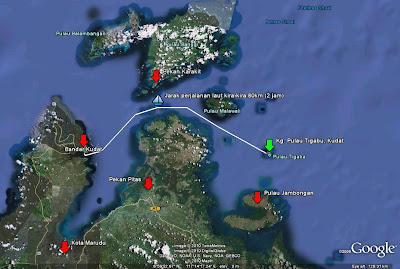Hunters of the sea

One of the groups of people I had the privilege to work with was small-scale fishers, also described in literature as ‘artisanal fishers’. An artisan is basically a skilled manual worker and that is precisely what an artisanal fisher is. You might wonder what the big deal is but in a world where products are mass produced or extracted with machinery, the artisans are a dying breed and their products can fetch a pretty penny. But does an artisanal fisher earn a decent living and how are they perceived by society in general?
I like using the gender-neutral term ‘fisher’ to describe these resilient, kind and generous people. Although men dominate this dangerous trade, women and even children are equally important contributors to the household. I once went out with a woman and her son to catch shrimp off the mangrove-lined coast of Langkawi. It was hard work through and through: back-breaking task of hauling in the gillnet; sorting the spiky shrimp; and to my horror, tossing out countless by-catch. I have seen women and children wade barefooted on reef flats of Banggi during low tide to glean mollusk and seaweed to supplement their diet. It was also the wives of the fishers I turned to when I was setting up a fish collection data program in several villages in Banggi. Many of them were literate and diligent in recording their husband’s daily catch.
As a female conservation worker in the field, I must have been a curious and inconvenient visitor to many of the fishers. They worry about my safety when I asked to go out fishing with them; they may have even perceived me as bad luck. One elderly hook-and-line fisher set out early in the morning without me even though he had said yes the night before! Yet others have accommodated my requests in the name of research and conservation. Some posed in photographs and acted in a video; pretending to spray “poison”(coconut milk) into reef crevices, tossing a fake bomb and collecting already dead fish; all this to educate their fellow fishers on the harmful effects of destructive fishing practices on their own livelihood and the environment. Many answered my incessant questions about their trade good-naturedly, like the fishers of Balambangan who were drying sharks’ fin on coconut fronds.

Explaining the concept of marine reserves to the artisanal fishers of Maliangin Island through some fun and games. Plastic green fish for lunch, anyone?

And the coconut milk will make the fish do what?
The intuition, resilience and resourcefulness of artisanal fishers have always inspired and awed me. With knowledge and skills passed down from generation to generation, they can read the sea and its moods sans sophisticated technology; knowing when to back off when a storm is brewing in the distance; where and when to take a chance for bountiful harvest. They understand the seasons and the movement of the sea creatures. WWF boatman Pakcik Damsek Hassan was also a fisher and his extensive knowledge on local conditions have served us well on many occasions.


And the coconut milk will make the fish do what?
The intuition, resilience and resourcefulness of artisanal fishers have always inspired and awed me. With knowledge and skills passed down from generation to generation, they can read the sea and its moods sans sophisticated technology; knowing when to back off when a storm is brewing in the distance; where and when to take a chance for bountiful harvest. They understand the seasons and the movement of the sea creatures. WWF boatman Pakcik Damsek Hassan was also a fisher and his extensive knowledge on local conditions have served us well on many occasions.

Pakcik Damsek and the team during a surface interval. I trust him with my life completely
Alas, this connection with nature is increasingly lost and taken for granted. The ever pragmatic fishers acknowledge that there is no real future for their children in this way of life and encourage them to pursue other paths.
Alas, this connection with nature is increasingly lost and taken for granted. The ever pragmatic fishers acknowledge that there is no real future for their children in this way of life and encourage them to pursue other paths.



Comments
Post a Comment